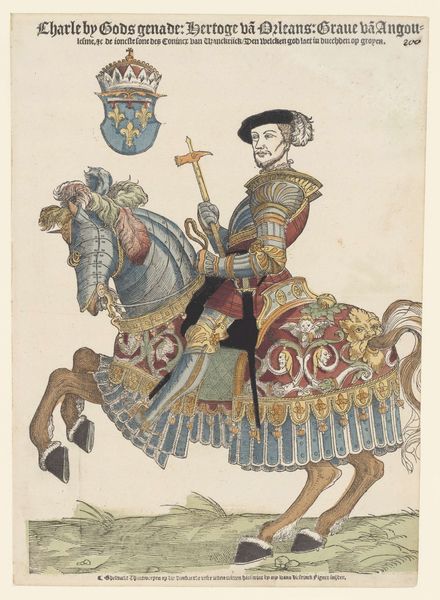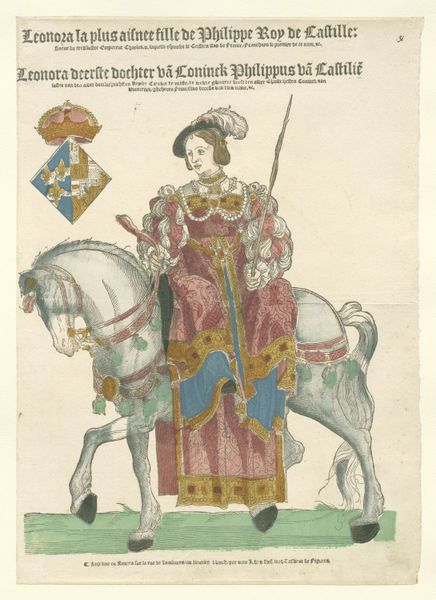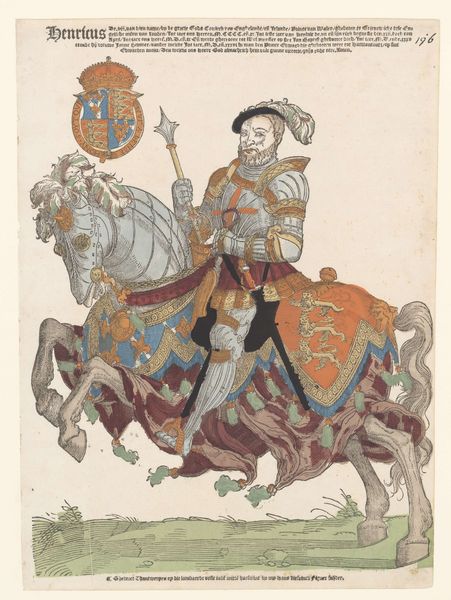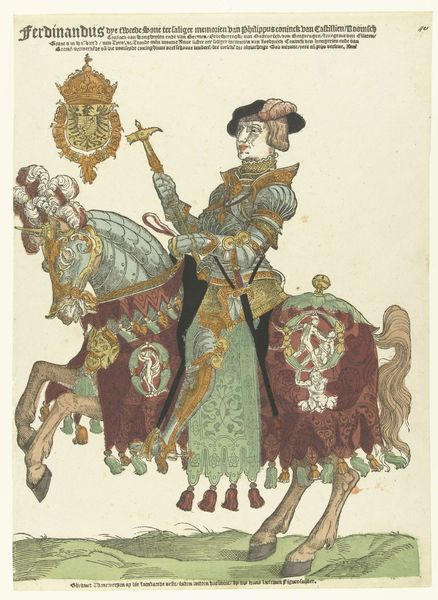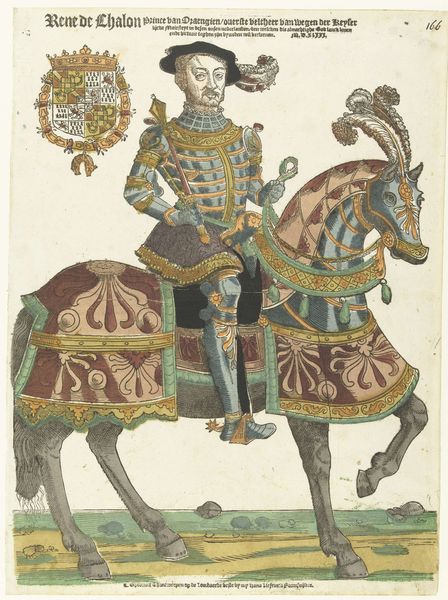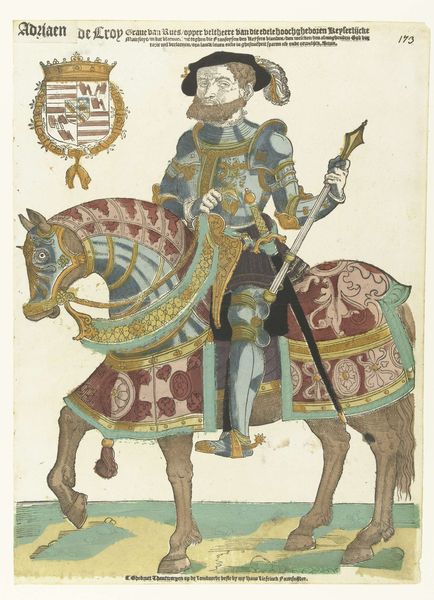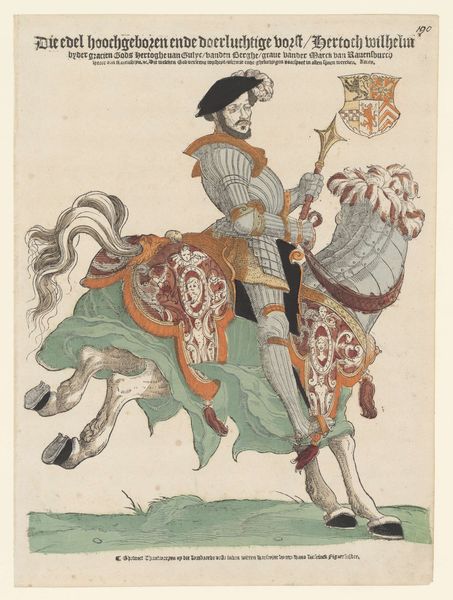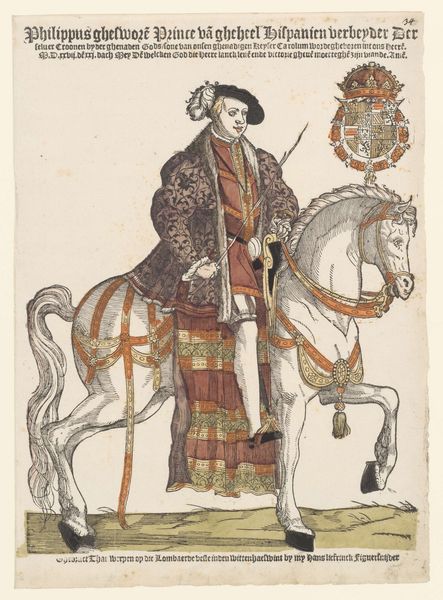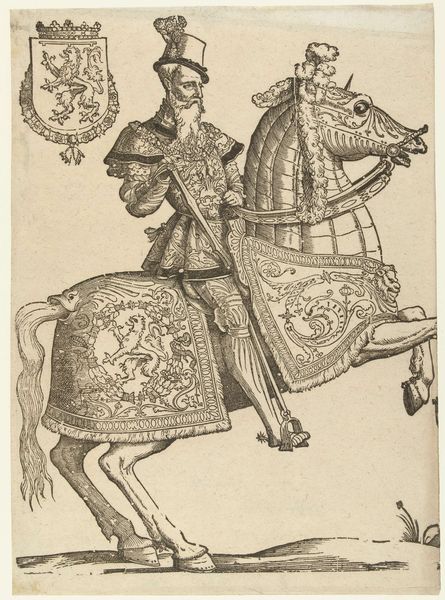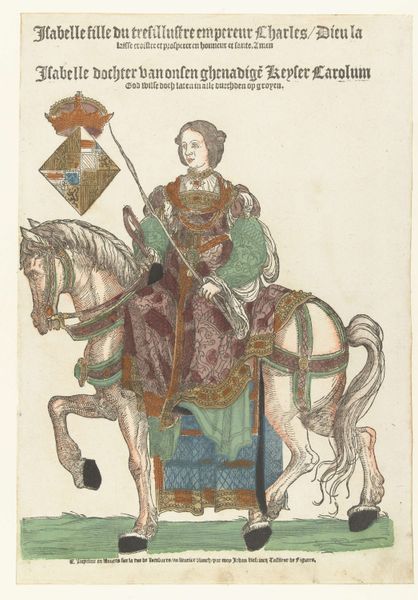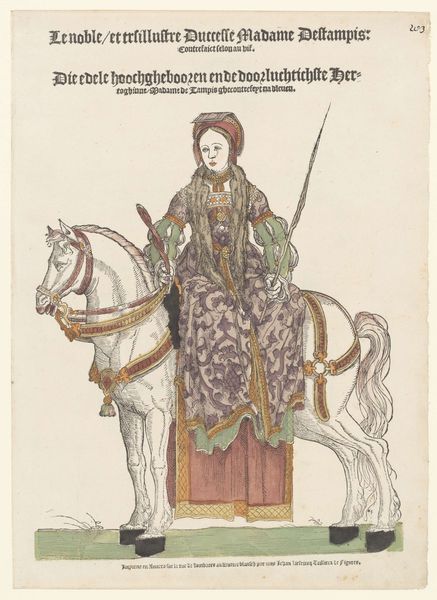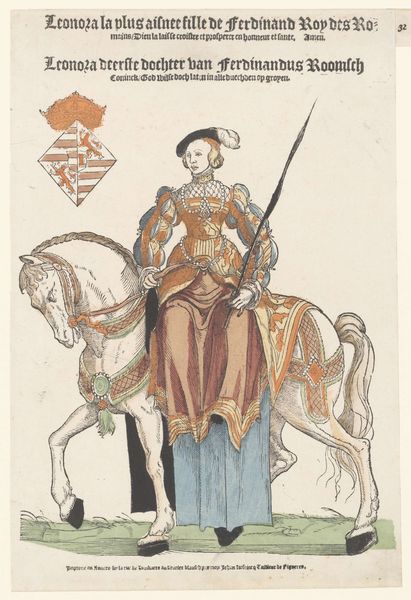
print, engraving
#
portrait
# print
#
11_renaissance
#
history-painting
#
engraving
Dimensions: height 405 mm, width 295 mm
Copyright: Rijks Museum: Open Domain
This woodcut, made in the Netherlands around 1550 by Cornelis Anthonisz, depicts Philip II of Spain on horseback. Equestrian portraits are often associated with power and authority, and this image is no exception, but the relatively humble medium of the woodcut suggests that it was intended for a broader public, not just the elite. Look at the details: the coat of arms, the decorative armor, and the inscription above, all meant to convey Philip's status and legitimacy. Consider the historical context: the Netherlands was then under Spanish rule, and this image would have been circulating at a time of political and religious tension between the Dutch and their Spanish overlords. Was this image a piece of propaganda intended to inspire loyalty to the Spanish crown? Or was it a more neutral representation of power? As historians, we look at such images through a critical lens, examining the social and political conditions of their production and reception. By consulting historical documents, such as letters, pamphlets, and other visual sources, we can gain a deeper understanding of the complex relationship between art, power, and society.
Comments
No comments
Be the first to comment and join the conversation on the ultimate creative platform.
